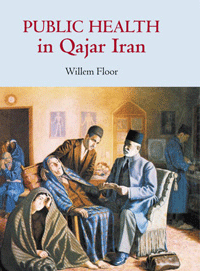 Iranians
in Canada Iranians
in Canada
A statistical analysis
Vahid Garousi
June 30, 2005
iranian.com
Abstract
This paper [full
text pdf] presents a statistical analysis
on the demographic, social educational and occupational issues
of
the
Iranian-Canadian
community. The main sources of data for the paper are the Government
of Canada’s 2001 census statistics and an online webbased
survey conducted by the author from the Iranian-Canadian community.
Other sources were the author’s personal experiences and
findings during his study and life in Canada during the last four
years and also information provided by his friends and colleagues.
Demographic features of the Iranian-Canadians such
as population, gender, immigration status and period, age groups,
marital status
and marriage are investigated and compared to other typical Canadians.
Other topics such as education, employment factors, income levels,
ties with the home country (Iran), interest in and preservation
of the home culture, identity in Canada, following issues related
to Iran are also addressed. We also give a short discussion on
the intra-social relations in the Iranian community in Canada.
A brief overview on some of the related works, done
specifically on the Iranians living in Canada, is also presented.
The author
hopes this analysis dispels the illusion held by Iranians prior
to their immigration to foreign countries and Canada in particular.
He further hopes that the analysis helps the decision makers
and also Iranians associations, groups and societies both in
Iran and
in Canada to better analyze and solve the social, cultural,
and psychological issues of the Iranian-Canadian community.
 Introduction Introduction
The term “immigration” is defined as: “entrance
of a person (an alien) into a new country for the purpose of establishing
permanent residence.
Motives for immigration, like those for migration generally, are often economic,
although religious or political factors may also be very important. Recently
there has been a large number of Iranians leaving Iran and immigrating to other
countries, mostly the western world. By considering the number of Iranian students,
scholars and professors in American and Canadian universities, and also high-tech
companies in North America for example, one can easily find that there are enormous
numbers of Iranian educated professionals.
A paper was published by the author
about the afore mentioned topic on Dec. 2003. The paper was entitled: A Survey
on the Immigration of Iranian Experts and the Elite: Reasons, Losses and Possible
Solutions. It was presented at the Scientific Seminar on the Discourse of Overseas
Iranian Youth, Tehran, Iran, held by the department of Social Affair and Overseas
Iranians at the Iranian Organization of Culture and Islamic Relations in January
2004. That study provided discussions, originating from
personal experiences, on the subject of the immigration of Iranian
experts and the elite.
We particularly
aimed to identify and present the general reasons Iranian youth decide
to immigrate from their homeland, what the costs and losses of
this
outflow to the country
are, and also the potential solutions, the government, Iranian educational
institutions, and the society might undertake to reduce the
immigration rate of experts. Furthermore,
we also investigated Iranians immigration rate in the recent years and
some of the required preparations needed by the Iranian government
and the society, to
attract and host Iranians who have left Iran.
The current work can be considered
as one of the possible continuations of the previous one by the author.
It can be regarded as the next step in the journey of immigration,
in a way that,
we are studying the Iranian- Canadian community in this paper. We are going
to analyze, from a statistical point of view, what happens
to most Iranians after
they decide to immigrate from Iran and come to Canada.
We discuss what
the demographic features of the Iranian-Canadian community are.
The
demographic features, we
are going to address in this work, include population, immigration status,
period and age at immigration, age groups, marital status
and marriages, family conditions, languages and ethnic backgrounds of Iranian-Canadians
who live in Canada. We study some of those statistics for Iranian-Canadians
per Canadian provinces, territories, and cities.
 There are also some interesting
discussions and findings when comparing some of the social/cultural aspects
of
the Iranian-Canadian community versus typical Canadians or those with
other Middle Eastern backgrounds such as: Pakistanis, Turks, Iraqis,
and Azerbaijanis
. We
will see for example in Section 4.2.1 that the number of Canadians with
Iranian origin is more the Canadians with aforementioned backgrounds.
In the contrary,
we will also find out in Section 4.2.4 that the percentage of interracial
marriages in Iranian-Canadians is lower than
the Canadians with aforementioned backgrounds >>> Full
text pdf There are also some interesting
discussions and findings when comparing some of the social/cultural aspects
of
the Iranian-Canadian community versus typical Canadians or those with
other Middle Eastern backgrounds such as: Pakistanis, Turks, Iraqis,
and Azerbaijanis
. We
will see for example in Section 4.2.1 that the number of Canadians with
Iranian origin is more the Canadians with aforementioned backgrounds.
In the contrary,
we will also find out in Section 4.2.4 that the percentage of interracial
marriages in Iranian-Canadians is lower than
the Canadians with aforementioned backgrounds >>> Full
text pdf
About
Vahid Garousi MASc is a PhD Candidate in the Department of Systems
and Computer Engineering, Carleton University, Ottawa, Ontario,
Canada.
|